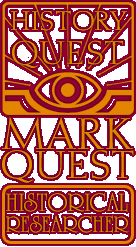 |
| The
Celtic tradition
of passing down stories orally, was occasionally found wanting: Visions
of a druid priest or mystical leader (Shaman) pertaining to sacred
things and places could not be spoken of and, if perceived to be prophetic,
had to be recorded by inscribing tablets fashioned from sacred trees
usually from the bole of dead yew trees. On occasion stone tablets
were used, such as those found during the 1860s by William Watt at
**Skara Brae. (See note.) The tablets were called Gesa or Gessa -
Geis meaning forbidden words. It is very probable that the origins
of the runes or "Geis" developed from a belief system that
forbade the vocalization of sacred sounds. As the casual retelling
of visions was totally forbidden, it can be assumed that the druid
priests regarded the need to record any such vision or mystical experience
essential. Their answer was to create the - Geisa - the original runic
symbols. The existence of these "Sacred" symbols would be known only
to the inner circle of initiates, the symbols were "THE GEIS" being
the origin of the term itself.
|
No
surviving examples of the ancient sacred Geis-Runes are known to exist.
The well known "futharc" runic alphabet dates from around the third
century AD, it was used mainly in the British Isles and Scandinavia.
Though many inscriptions and a few manuscripts still exist its origins
are uncertain. It is generally considered by "the experts" that they
are derived from the Roman alphabet. A few scholars (including this
author) maintain that the opposite is very likely the case. We believe
that the ancient sacred symbols resembling the futharc runes inscribed
on stone tablets, that were found at Skara Brae in the mid 19 century
were in fact not a fraud as was stated at the time. Furthermore as
they predate the Roman invasion of Britain by over 15 hundred years
it is likely that these or similar sacred symbols were in use by the
druidic mystical hierarchy at the time Rome was sacked by the ancient
Celts or Keltoi in 386 BC. Therefore the Geis-Runes could very well
have been the symbols that were used as a basis or template for the
Roman alphabet. |
| The theory of the Urrunen
(forerunners of the runes), a supposed prehistoric north Germanic
alphabetic script, holds that it is the parent not only of the runes
but also of all the Mediterranean alphabets, including the Phoenician.
This belief, based on racial and political grounds,
need not be seriously considered. |
|
The "fraudulent"
stone tablets were supposedly stolen before a scientific analysis
could be performed. The consensus was that they were sold to an
unsuspecting and as yet unknown private collector.
**Skara Brae was built
between c.2000 and 1500 BC. It is regarded as one of the most perfectly
preserved Stone Age villages in Europe, it was covered for hundreds
of years by a sand dune on the shore of the Bay of Skaill, Mainland,
Orkney Islands
|
|




